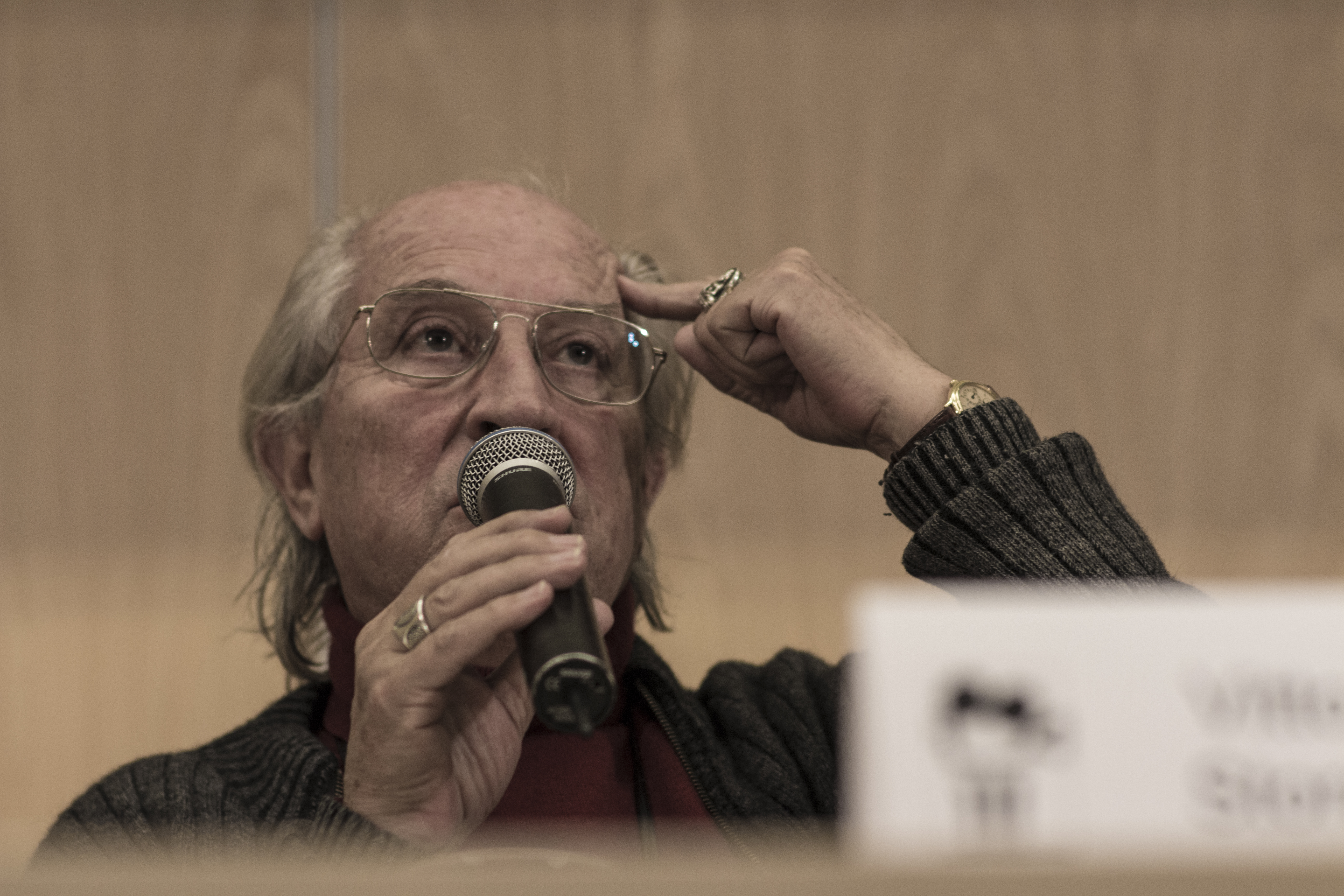|
Univisium
Univisium (Dog Latin, macaronic Latin for "unity of images") is a proposed universal film format created by cinematographer Vittorio Storaro, American Society of Cinematographers, ASC, AIC and his son, Fabrizio, to unify all future theatrical and television films into one respective aspect ratio (image), aspect ratio of 2:1. Predecessors The 2:1 aspect ratio was first used in the 1950s (April 1, 1953) for one of the two flat formats that Universal Pictures developed (alongside 1.85:1), the RKO Superscope format, and as an option in several other cinematographic formats. Another predecessor is Toho's Toho Pan Scope, used in the 1958 kaiju film Varan the Unbelievable and the 1957 Japanese re-release of Godzilla, King of the Monsters! (which in turn was the American localization of 1954's Godzilla (1954 film), Godzilla), using an anamorphic process similar to Superscope with film shot on monochrome flat 1.37:1 before being cropped to 2:1 during editing, The main proposal In 1998, ... [...More Info...] [...Related Items...] OR: [Wikipedia] [Google] [Baidu] |
Aspect Ratio (image)
The aspect ratio of an image is the ratio of its width to its height, and is expressed with two numbers separated by a colon, such as ''16:9'', sixteen-to-nine. For the ''x'':''y'' aspect ratio, the image is ''x'' units wide and ''y'' units high. Common aspect ratios are 1.85:1 and 2.39:1 in cinematography, 4:3 and 16:9 in television photography, and 3:2 in still photography. Some common examples The common film aspect ratios used in cinemas are 1.85:1 and 2.39:1.The 2.39:1 ratio is commonly labeled 2.40:1, e.g., in the American Society of Cinematographers' ''American Cinematographer Manual'' (Many widescreen films before the 1970 SMPTE revision used 2.35:1). Two common videographic aspect ratios are 4:3 (1.:1), the universal video format of the 20th century, and 16:9 (1.:1), universal for high-definition television and European digital television. Other cinema and video aspect ratios exist, but are used infrequently. In still camera photography, the most common aspect ra ... [...More Info...] [...Related Items...] OR: [Wikipedia] [Google] [Baidu] |
Vittorio Storaro
Vittorio Storaro, A.S.C., A.I.C. (born 24 June 1940) is an Italian cinematographer widely recognized as one of the best and most influential in cinema history, for his work on numerous classic films including ''The Conformist,'' ''Apocalypse Now'', and ''The Last Emperor''. In the course of over fifty years, he has collaborated with directors such as Bernardo Bertolucci, Francis Ford Coppola, Warren Beatty, Woody Allen and Carlos Saura. He has received three Academy Awards for Best Cinematography for the films ''Apocalypse Now'' (1979), ''Reds'' (1981), and ''The Last Emperor'' (1987), and is one of three living persons who has won the award three times, the others being Robert Richardson and Emmanuel Lubezki. Early life Storaro was born in Rome. The son of a film projectionist, Storaro began studying photography at the age of 11. He went on to formal cinematography studies at the national Italian film school, Centro Sperimentale di Cinematografia, when he was 18. Career Sto ... [...More Info...] [...Related Items...] OR: [Wikipedia] [Google] [Baidu] |
Univision 3-perf
Univision () is an American Spanish-language free-to-air television network owned by TelevisaUnivision. It is the United States' largest provider of Spanish-language content. The network's programming is aimed at the Latino public and includes telenovelas and other drama series, sports, sitcoms, reality and variety series, news programming, and imported Spanish-language feature films. Univision is headquartered in Midtown Manhattan, New York City, and has its major studios, production facilities, and business operations based in Doral, Florida (near Miami). Univision is available on pay television providers throughout most of the United States, with local stations in over 60 markets with large Latin American communities. Most of these stations air full local newscasts and other local programming in addition to network shows; in major markets such as Los Angeles, Miami, and New York City, the local newscasts carried by the network's owned-and-operated stations are equally competi ... [...More Info...] [...Related Items...] OR: [Wikipedia] [Google] [Baidu] |
